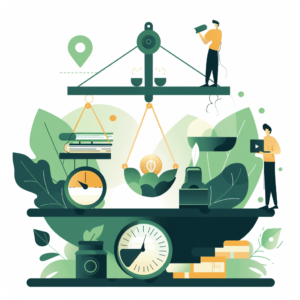
Essential Highlights
In today’s fast-paced world, maintaining a healthy work-life balance is crucial for mental well-being. The demands of modern workplaces may lead to stress, burnout, and a decrease in overall quality of life. Balancing professional responsibilities with personal life can be challenging, but it’s vital for long-term health and happiness. Achieving this balance helps to reduce stress, improve mental health, and foster a more fulfilling life both at work and home.
Work-life balance refers to the equilibrium between professional duties and personal activities. When one side outweighs the other, it can lead to negative consequences such as stress, anxiety, and a lack of productivity. Therefore, it’s essential to find a balance that allows for professional success without sacrificing personal well-being.
Managing your time effectively is one of the first steps toward achieving a healthy work-life balance. Here are some strategies to help you organize your day:
Start by identifying the most critical tasks that need to be completed each day. Use tools like the Eisenhower Matrix to categorize tasks based on urgency and importance. This method helps to focus on high-priority items and minimizes time spent on less critical activities.
Create a daily schedule that includes blocks of time dedicated to specific tasks. Tools like Google Calendar can assist in planning and visualizing your day. Ensure to allocate time for breaks and personal activities to avoid burnout.
Don’t hesitate to delegate tasks to others when possible. Delegating not only lightens your workload but also empowers your team members and enhances their skills. Clearly communicate expectations and provide necessary resources to ensure successful delegation.

Identify common distractions in your work environment and find ways to minimize them. This might include setting specific times for checking emails, using noise-canceling headphones, or creating a designated workspace free from interruptions.
Setting clear boundaries between work and personal life is essential for maintaining mental well-being. Here are some ways to establish and uphold these boundaries:
Define specific work hours and stick to them consistently. Communicate these hours to your colleagues and clients to manage expectations. Outside of these hours, refrain from engaging in work-related activities to ensure personal time is protected.

If working from home, designate a specific area as your workspace. This separation helps to create a physical boundary between work and personal life, making it easier to switch off at the end of the day.
Use technology to your advantage by setting up out-of-office responses and scheduling emails to be sent during work hours. This approach helps to manage expectations and reduces the pressure to be constantly available.
It’s important to recognize when you have too much on your plate and to feel comfortable saying no to additional responsibilities. Politely declining extra tasks can prevent over-commitment and help maintain a manageable workload.
Incorporating activities that promote relaxation and well-being into your daily routine is vital for reducing stress. Here are some suggestions:
Regular physical activity is proven to reduce stress and improve mood. Whether it’s a morning jog, yoga session, or a quick walk during lunch breaks, exercise helps to clear the mind and boost energy levels.
Practicing mindfulness and meditation can significantly reduce stress and enhance mental clarity. Apps can offer guided sessions that can easily be incorporated into your daily routine.
Engage in hobbies and interests outside of work to provide a mental break and foster creativity. Whether it’s painting, gardening, reading, or playing a musical instrument, these activities can help to recharge and rejuvenate.
Maintaining strong social connections with friends and family is crucial for mental well-being. Regularly spending time with loved ones provides emotional support and helps to maintain a positive outlook.
Achieving a healthy work-life balance is essential for maintaining mental well-being in today’s busy world. By implementing practical time management strategies, establishing clear boundaries, and engaging in stress-reducing activities, individuals can create a more balanced and fulfilling life. Remember, it’s important to prioritize your mental health and make conscious efforts to maintain harmony between professional and personal spheres.